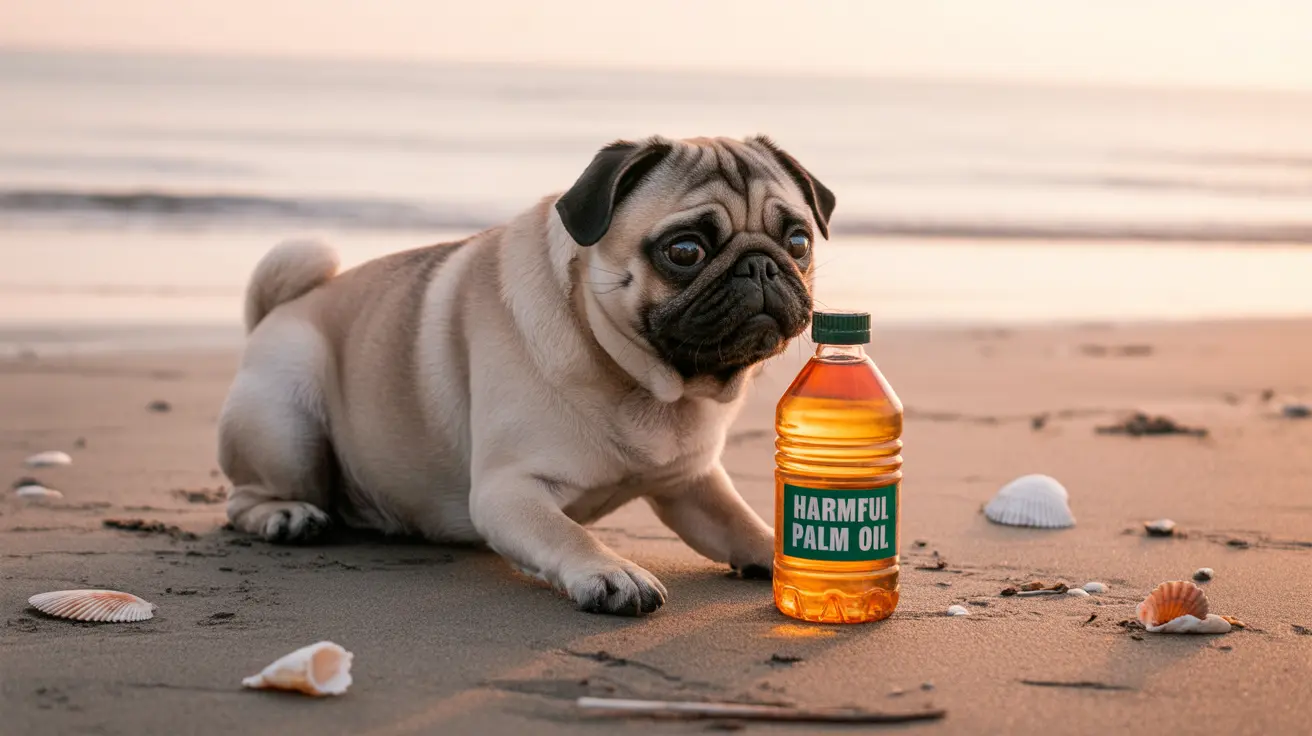The Truth About Palm Oil and Dogs
As pet owners become increasingly conscious about their dogs' diets, questions about ingredients like palm oil have risen to the forefront. While palm oil isn't inherently toxic to dogs, its safety depends largely on the form, quantity, and source of exposure. Understanding these nuances is crucial for protecting your furry friend's health.
Palm oil, extracted from oil palm tree fruits, appears in numerous products from human foods to pet treats. However, its presence in your dog's environment can range from intentional (as a food ingredient) to potentially dangerous (as contaminated waste on beaches).
Understanding Palm Oil Sources and Exposure
Dogs typically encounter palm oil in three main ways: through processed foods, commercial pet products, and environmental exposure. In processed foods and treats, it's usually present in small, regulated amounts. However, the most dangerous exposure comes from contaminated palm oil waste washing up on beaches, appearing as white, waxy lumps that can attract curious dogs.
Food-Grade Palm Oil vs. Contaminated Forms
Pure, food-grade palm oil used in commercial products poses minimal risk when consumed in small quantities. However, beach-found palm oil often contains dangerous contaminants including fuel residues, bacteria, and other toxic substances that can cause severe illness in dogs.
Health Risks and Dangers
Immediate Health Concerns
Even clean palm oil can cause significant digestive issues in dogs due to its high fat content. Common problems include:
- Severe diarrhea and vomiting
- Abdominal pain and discomfort
- Dehydration
- Pancreatitis (especially in susceptible dogs)
Long-term Complications
More serious complications can arise from ingesting contaminated palm oil or large quantities:
- Intestinal blockages requiring surgery
- Liver and kidney damage
- Chronic pancreatitis
- Metabolic disturbances
Prevention and Safety Measures
To protect your dog from palm oil-related health issues:
- Keep dogs leashed on beaches known for palm oil deposits
- Check ingredient lists on treats and human foods
- Avoid feeding high-fat foods containing palm oil
- Monitor your dog closely during beach visits
When to Seek Veterinary Care
If you suspect your dog has consumed palm oil, especially from a beach or unknown source, immediate veterinary attention is crucial. Watch for symptoms like persistent vomiting, lethargy, or signs of abdominal pain.
Frequently Asked Questions
Is palm oil safe for dogs to eat in small amounts or as an ingredient in treats?
While pure, food-grade palm oil in very small amounts (such as in commercial treats) is generally safe, it's not recommended as a regular part of your dog's diet. The high fat content can cause digestive issues and potentially trigger pancreatitis in sensitive dogs.
What are the symptoms to watch for if my dog ingests palm oil?
Key symptoms include vomiting, diarrhea, abdominal pain, lethargy, and dehydration. In severe cases, dogs may show signs of pancreatitis or intestinal blockage, including persistent vomiting and severe discomfort.
Can eating palm oil cause pancreatitis or digestive blockages in dogs?
Yes, palm oil can trigger pancreatitis due to its high fat content, particularly in susceptible dogs. Solid chunks of palm oil can also cause dangerous digestive blockages, especially when ingested in large amounts or in solidified form.
Why is palm oil found on beaches dangerous for dogs compared to the pure form?
Beach-found palm oil is particularly dangerous because it's often contaminated with bacteria, fuel residues, and other toxic substances. Additionally, it can form large, solid chunks that pose a serious risk of intestinal obstruction.
What should I do if my dog eats contaminated palm oil from the beach?
Seek immediate veterinary care if your dog consumes palm oil from a beach. Don't wait for symptoms to develop, as early intervention can prevent serious complications. Your vet may induce vomiting if the ingestion was recent and provide supportive care as needed.






